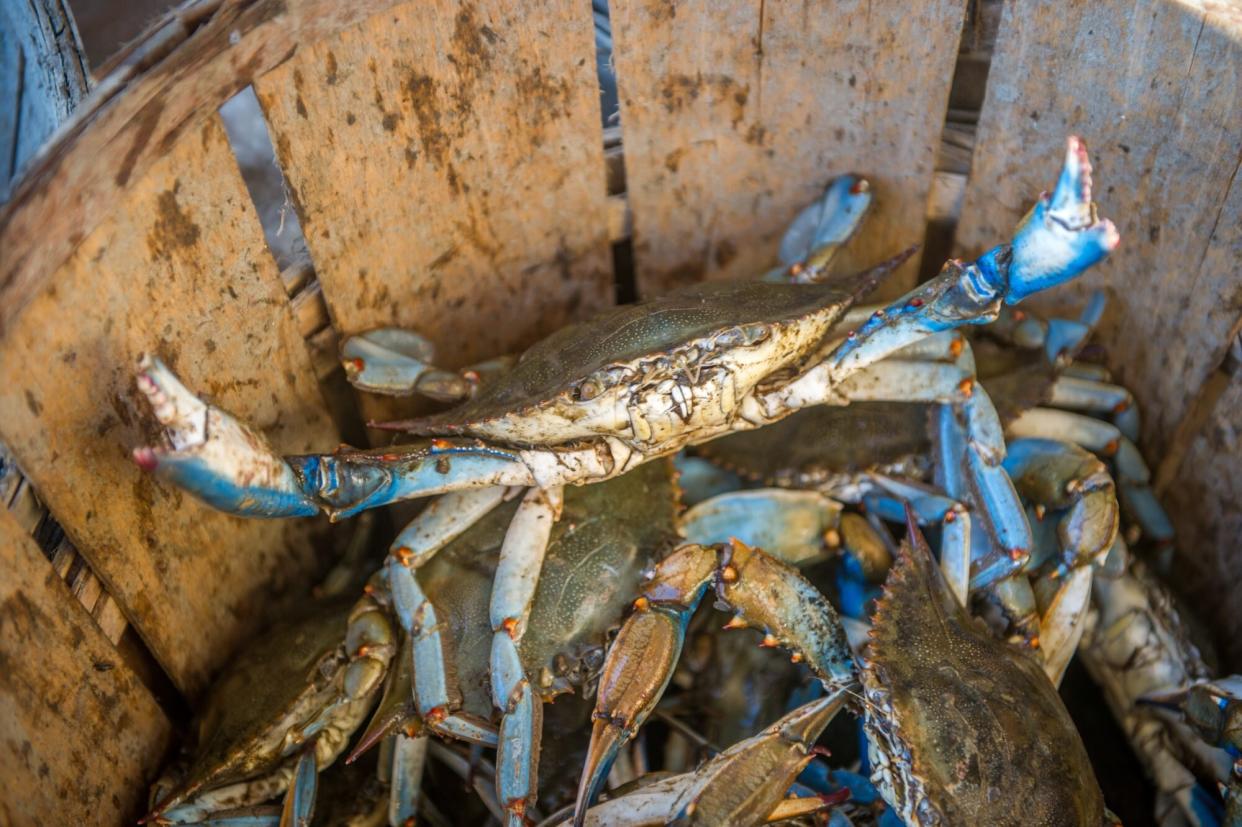Chesapeake Bay's Cherished Blue Crab Population at Record Low

VW Pics/Getty Images
Bad news for crab-lovers in Maryland and Virginia.
The 2022 dredge survey, done at 1,500 sites in the Chesapeake Bay, found the worst total blue crab numbers since the survey began in 1990.
The Maryland Department of Natural Resources' 2022 Baywide Blue Crab Winter Dredge Survey—done in cooperation with the Virginia Institute of Marine Science—estimated that 227 million crabs are living in the estuary, down from 282 million in 2021. The highest estimate was 852 million blue crabs back in 1993.
While the survey's juvenile crab population rose to 101 million from 86 million last year, the number is below average for the third year.
Chesapeake Bay Foundation Senior Regional Ecosystem Scientist Chris Moore said in a statement to the Associated Press that the results "continue a worrying trend."
"Fisheries regulators and scientists must work quickly to identify the key ecosystem factors influencing blue crab recruitment and survival so that they can be mitigated to ensure a healthy blue crab population in the future," Moore said.
Allison Colden, Maryland senior fisheries scientist for the Chesapeake Bay Foundation, told WJZ that the decline could be happening because of environmental factors.
"It's some combination of a number of things it could be loss of underwater grass habitat which is extremely important," she said. "[It] could also be poor water quality and low oxygen conditions in the summertime.
According to the National Wildlife Federation, warming temperatures in the Chesapeake Bay have a negative impact on eelgrass, a seagrass that provides essential habitat for juvenile blue crabs.
Blue crabs, also known as Chesapeake blue crabs or Atlantic blue crabs, have bright-blue claws and olive-green shells. They hold both cultural and economic significance in the Chesapeake Bay area, where they are a staple at summertime gatherings.

